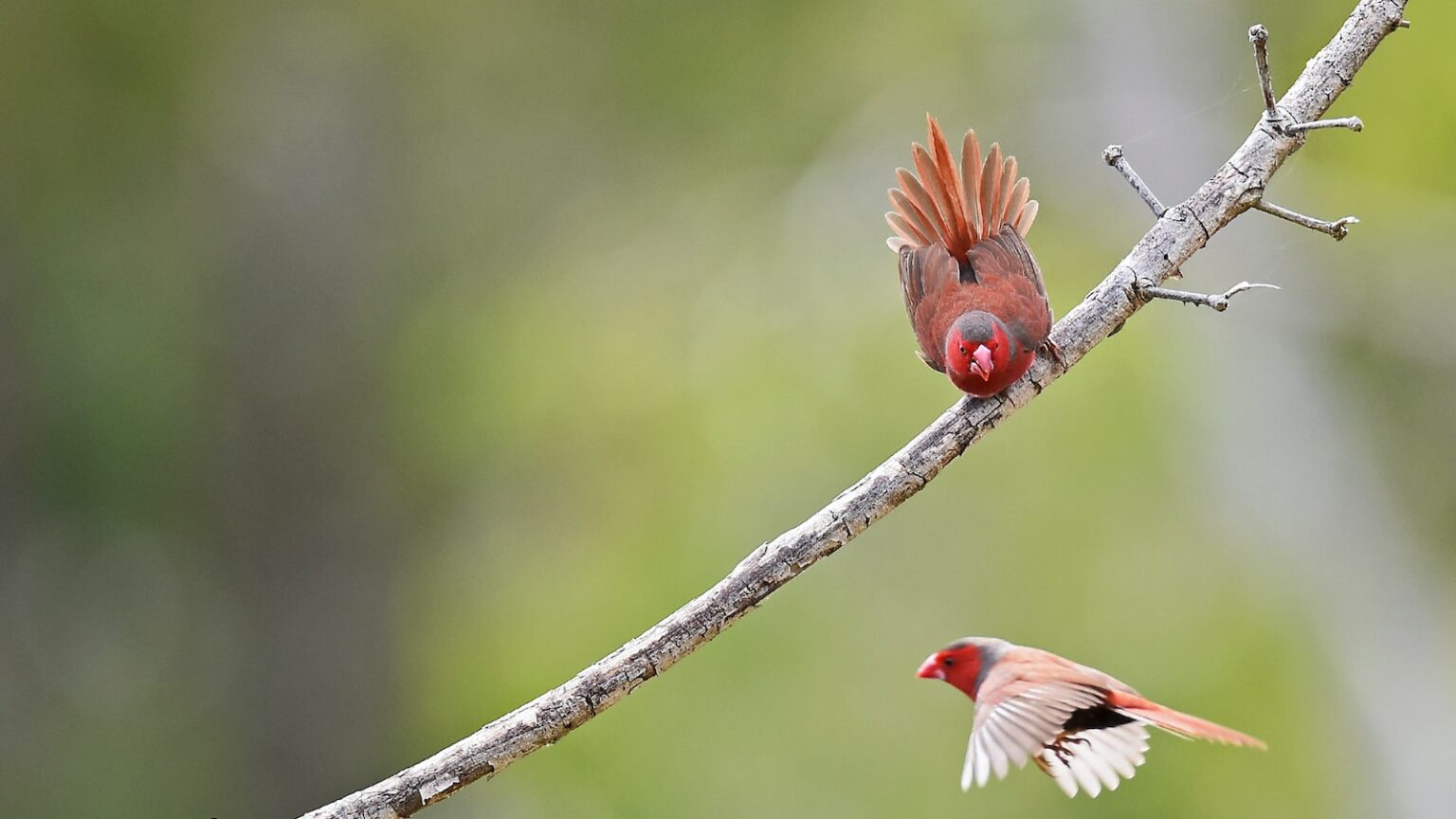Birds are enchanting creatures that never cease to amaze us with their dazzling feathers, melodious songs, and extraordinary abilities. Whether you are an avid bird watcher or simply curious about our feathered friends, you’ve probably wondered at some point, “What is an interesting fact about birds?” Prepare to be entertained and captivated as we embark on a journey to uncover fascinating insights about these remarkable beings. From their unparalleled intelligence to their astonishing migration patterns, join us as we delve into the intriguing world of birds and discover the most captivating and surprising facts about them. Welcome to the avian realm, where curiosity meets discovery and wonder takes flight.
Table of Contents
- Amazing Adaptations Birds Have Evolved Over Millennia
- The Wondrous World of Bird Migration
- Spectacular Feats of Avian Intelligence
- Birds: Nature’s Singers and Mimickers
- Q&A
- To Conclude

Amazing Adaptations Birds Have Evolved Over Millennia
Throughout the course of millions of years, birds have developed a vast array of incredible adaptations that have allowed them to thrive in various environments across the globe. These adaptations, honed through an ongoing process of natural selection, not only aid in their survival but also make them some of the most extraordinary creatures on our planet.
One of the most fascinating adaptations birds possess is their ability to fly. This remarkable skill is made possible by their hollow, lightweight bones that reduce their overall weight, enabling them to take to the skies with ease. Additionally, their feathers play a crucial role in flight, providing both lift and propulsion. The unique skeletal structure and highly efficient respiratory system of birds further contribute to their mastery of flight. Whether it’s the effortless soaring of a majestic eagle or the agile maneuvering of a tiny hummingbird, witnessing these avian marvels in action never fails to captivate our imagination.
Diverse Beak Shapes and Functions
Another astounding adaptation seen in birds is the wide diversity of beak shapes and functions that have evolved to suit their particular dietary needs. From the long, slender beak of a hummingbird used for probing flowers to the sharp, strong beak of a raptor used for tearing prey, there is an incredibly diverse range of beak designs in the avian world. For example:
- Cone-shaped beak: This adaptation is found in birds that primarily feed on seeds. Their sturdy, cone-shaped beaks allow them to crack open tough seed shells with precision.
- Pelican pouch: Some species of pelicans possess an expandable pouch beneath their beak, allowing them to scoop up large quantities of fish while swiftly swimming through the water.
- Serrated beaks: Certain species of birds, like the American white pelican, have serrated edges on their beaks. This serration aids in the capture and retention of slippery prey, such as fish, preventing it from escaping.

The Wondrous World of Bird Migration
Bird migration is truly an awe-inspiring phenomenon that continues to captivate scientists and nature enthusiasts alike. **Every year, billions of birds embark on epic journeys across vast distances, navigating their way across continents, oceans, and mountain ranges.** These incredible migrations are driven by a combination of factors, including the search for better breeding grounds, access to food sources, and favorable climatic conditions.
One of the most fascinating aspects of bird migration is the sheer diversity of species that participate in this remarkable journey. From the tiny ruby-throated hummingbird to the majestic Arctic tern, birds of all shapes and sizes take to the skies in search of greener pastures. **During their journey, migratory birds face numerous challenges and obstacles, but they possess remarkable adaptations and strategies to overcome these hurdles.** They rely on celestial cues, such as the position of the sun and stars, to orient themselves, and also utilize landmark features, such as coastlines and mountain ranges, as navigation aids.

Spectacular Feats of Avian Intelligence
When it comes to intelligence, birds continue to amaze scientists with their remarkable feats. From problem-solving abilities to advanced communication skills, our feathered friends continually demonstrate their remarkable intelligence in breathtaking ways.
One prime example is the remarkable tool usage displayed by some avian species. For instance, the New Caledonian Crow fashioning hooked sticks to extract insects from tree bark, and the Green Heron using bait to attract fish closer for an easy catch. These behaviors not only highlight their problem-solving skills but also challenge our understanding of what it means to be intelligent. Furthermore, some bird species, such as the African Grey parrot, possess extraordinary vocal learning abilities. With their impressive vocabularies that can exceed a hundred words, these birds showcase their remarkable talent for mimicry and communication.
Another fascinating aspect of avian intelligence is their extraordinary memory and navigation skills. Many bird species exhibit impressive spatial memory, allowing them to remember vast territories and navigate back to specific locations. For instance, homing pigeons have been known to travel hundreds of miles to return to their nests with pinpoint accuracy. Similarly, the Arctic Tern undertakes one of the most extraordinary migrations, covering up to 44,000 miles round trip from the Arctic to the Antarctic. This incredible journey relies heavily on their remarkable navigational skills and ability to use multiple cues, such as the sun, stars, and the Earth’s magnetic field, to find their way.

Birds: Nature’s Singers and Mimickers
When it comes to the majestic symphony of nature, birds are undoubtedly the star performers. With their melodious tunes and impressive vocal abilities, they capture our attention and fill our surroundings with enchanting melodies. What makes birds truly exceptional is their incredible capacity to mimic sounds beyond their own species. Let’s delve deeper into this remarkable ability of these feathered creatures.
Unique Vocal Repertoire:
- Each bird species possesses a distinct and melodious song, making their vocalizations a true delight for our ears.
- From the mesmerizing trills of the nightingale to the vibrant chattering of the parakeets, their songs vary in rhythm, pitch, and complexity.
Mimicry: A Talent Beyond Imagination:
- Several bird species possess the extraordinary ability to mimic various sounds from their environment – from the chirping of other birds to the honking of car horns.
- The superb lyrebird, found in Australia, takes mimicry to a whole new level. It seamlessly imitates not only other bird calls but also the sounds of camera shutters, chainsaws, and even human speech.
Indeed, birds are the true enchanters of our world, captivating us with their natural singing abilities and astonishing mimicry skills. So next time you find yourself surrounded by their harmonious melodies, take a moment to appreciate these stunning songsters and their remarkable gift for imitating nature’s numerous sounds.
To Wrap It Up
In conclusion, the world of birds never ceases to amaze and captivate us with its fascinating facts. From their extraordinary adaptations and migratory marvels to their unique behaviors and exquisite plumage, birds truly are nature’s living wonders. Whether it’s the tiny hummingbird flapping its wings at an astounding rate or the mighty eagle soaring through the sky with grace, each species has its own intriguing story to tell.
While we may have uncovered a handful of intriguing facts today, there are many more waiting to be discovered and explored. So, why not delve deeper into the world of our feathered friends? Grab a pair of binoculars, head outdoors, and let the enchantment unfold right before your eyes. Whether you encounter a charming chirping sparrow or an elegant bird of paradise, remember to appreciate the uniqueness of each bird you come across.
So, whether you’re a seasoned birdwatcher or just starting to develop an interest in these winged creatures, take delight in the captivating facts we’ve shared and explore all the wonders that birds have to offer. Remember, nature always has a way of surprising and intriguing us, and the world of birds is no exception. Happy birdwatching!















